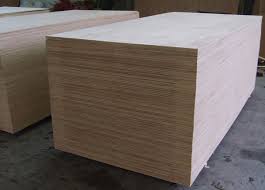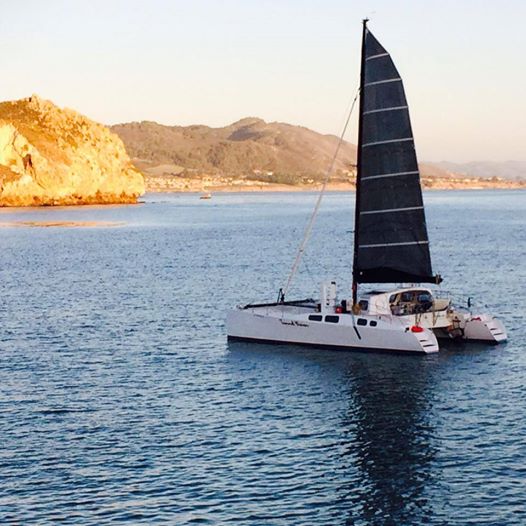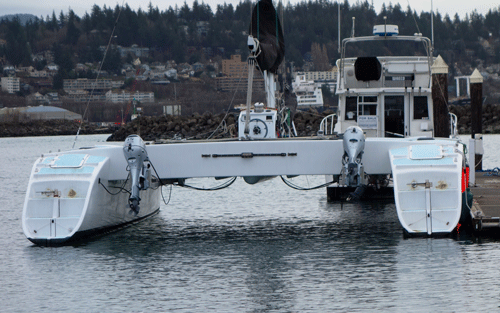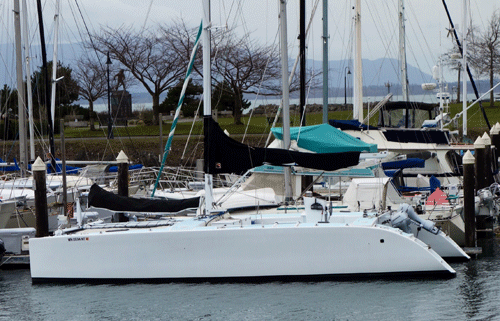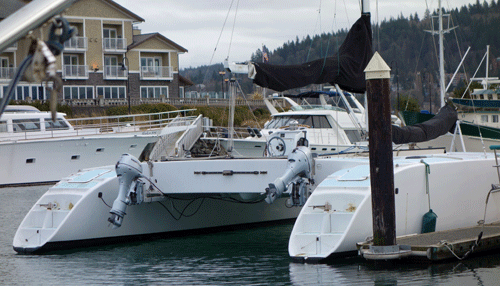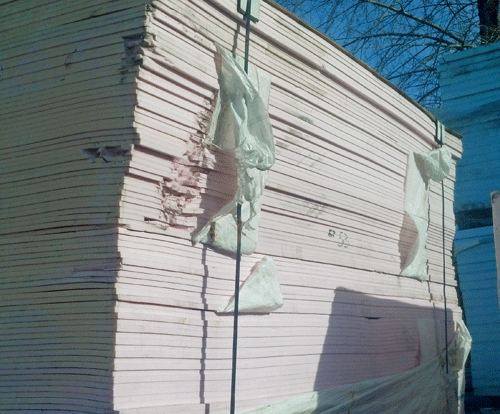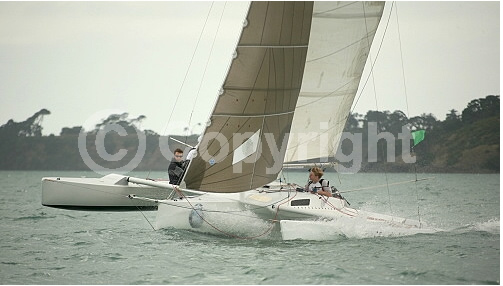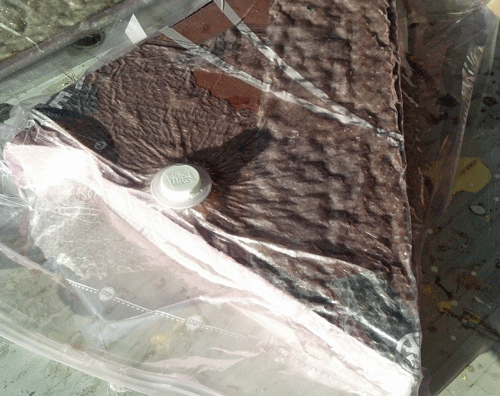I always assume that everybody knows the information in the article below but I just was brought up short, so it may be time again. A true believer over at multihull_boatbuilder forum sent me a note telling me that everytime I point out one of Derek Kelsall’s technical mistakes (and there are so many; he is big polyester fan) “people…believe in your expertise less and less”. I did find out that he is unaware of the below and not interested in it. It won’t be the first time that true believers wished I would stop pointing out what I see. Again, because I think it is so important to having a good vessel.
There are many good reasons to use epoxy instead of polyester.
First, stretch to failure. Glass fabric has about 6% stretch to failure. So does most room-temperature epoxy, and many vinylesters. Polyester stretch to failure is, everyone? About 1%. So in tension, the glass is only loaded to about 17% of its strength before the resin matrix starts to break apart and become a necklace.
Polyester will be bonding with water throughout its life, and it will gain surprising weight from that water, while losing strength properties. If I may quote from a D570 water weight gain test, “The orthophathlic casting had more than a 2.5% weight gain after 4 days, then showed a weight loss on the 7th and 14th days. That means the polymer is being broken down, solubilized, leached out of the composite, and replaced with water.”
The biggest benefit of epoxy is that epoxy is more forgiving during construction. Get the mix ratio right and you are there. With polyester, or even vinylester, one has to vary the MEKP level and vary the N,N-DMA level, oppositely, as a function of temperature change. Or, also, vary the BPO level and again vary the N,N-DMA level oppositely, as a function of temperature. The catylist/promotors have to be done exactly right to get a good degree of cure. The catylist/promoters will have amounts of down to fractions of a percent. Those amounts must be very precise if good results are intended.
Also, if the part is stored at less than 10C it may never cure fully, even with a later post cure. Using epoxy, you can improve the laminate properties with a post cure, almost always.
Interplastic Corp. has some great papers on this, which I am quoting from. Specifically, Proper Cure of Vinyl Ester Resins and A 15-Year Study of the Effective Use of Permeation Barriers in Marine Composites to Prevent Corrosion and Blistering.
I’ve never been able to afford a temperature controlled shop, so this
matters a great deal to me.
Until someone is using a Barcol hardness tool or even better, a D790
flexural strength test to prove it, I don’t want to hear how a laminate is acceptable with any or all the above conditions off, just because the lay-up looks good.
The point is if the temperature was too cold when you did an
epoxy laminate, you could bring it up to close to 100% cure later.
If you, for example, do a polyester laminate at 15C with 1% BPO and 0.3% N,N-DMA, you will have only an 80% cure and it probably cannot ever be improved.
That same formulation however will give 96% cure at 25C.
Most room temperature cure epoxies post-cure at around 65C to 70C. Static properties increase with the cure, and so does toughness against impacts. Epoxy can accrue the benefits of a post cure but polyester and most vinylester will not be improved by a post-cure. You got what you got.
Blisters are also a huge issue. With polyester, especially with orthophthalic resin, as Terry McCabe of Interplastic said, “Its not if it will form blisters, but when.” The useful paper again is “A 15 Year Study of the Effective Use of Permeation Barriers in Marine Composites to Prevent Corrosion and Blistering“. Aand again, Interplastic.
Shelf life is another issue. The useful shelf life of epoxy resin is years. Hardner has a shorter shelf life though it is still good for years. Both vinylester and polyester components have a shelf live of just months. If your project gets interrupted, that can cost you if you did a bulk-buy to save money.
In an issue of Multihulls Magazine, Tom Pawlak notes several other shortcomings of not using epoxy resin, including excess shrinking of the part. That is more significant than simply the parts not fitting. Excessive shrinking sets up what is called residual stress within the part. That is stress between the various layers that are oriented different directions. The result will be earlier failure under less load.
In conclusion, both epoxy and vinylester are much preferred to polyester. Structurally, epoxy and vinylester are close in properties. Epoxy however is much easier to work with, and is much more forgiving.
